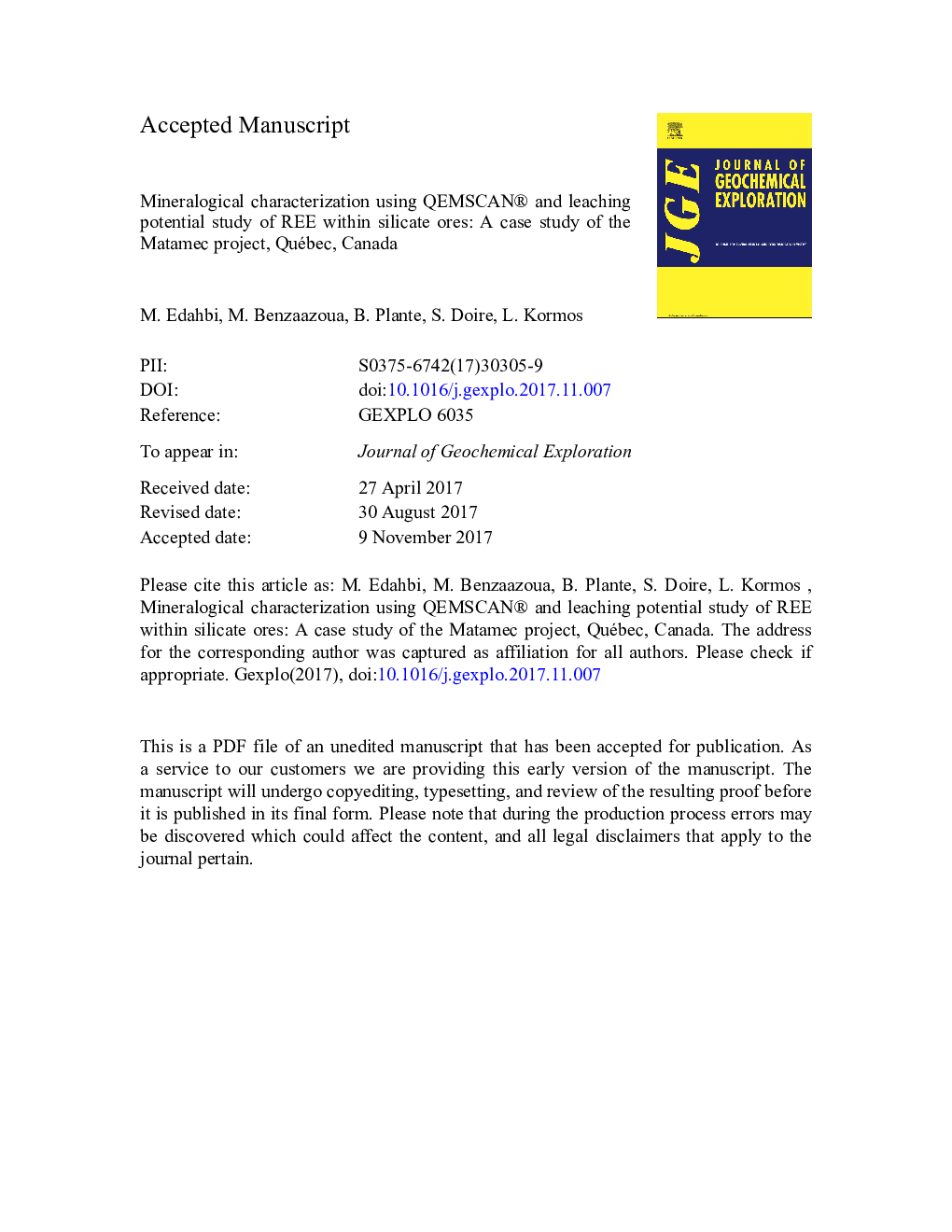| Article ID | Journal | Published Year | Pages | File Type |
|---|---|---|---|---|
| 8866107 | Journal of Geochemical Exploration | 2018 | 39 Pages |
Abstract
The mineralogy and leachability of the rare earth elements (REE) from the Kipawa deposit, a Heavy REE (HREE) mine project of Matamec Resources (Quebec, Canada), was investigated in order to predict their geochemical behavior and to evaluate the factors controlling the REE mobility in ambient conditions. All deposit lithologies defined, including ore and waste rocks, were sampled, characterized using a mineralogical multi-technique approach (automated SEM-EDS, EPMA-WDS, XRD), and then submitted to kinetic testing using weathering cells to investigate REE release potential. The mineralogical characterization shows that REE bearing minerals are mainly represented by mosandrite, fluorbritholite, apatite, monazite and Zr silicates (i.e., aqualite, reidite). Mineralogical analysis indicates that REE particles are at least 70% liberated and the remaining portion (around 30%) is locked within gangue minerals, containing 100% REE by area. The remaining fraction is either partially or totally locked in gangue minerals (i.e. carbonates, amphibole/pyroxene, and micas). The degree of liberation of these minerals is directly linked to their weathering. All kinetic test leachates showed a neutral to alkaline pH (7.0 to 9.5) and alkalinity values between 10 and 173mgCaCO3/l. REE release from the materials are all below 15 μg/l. Thermodynamic equilibrium calculations using VminteQ shows the possibility of secondary mineral precipitation (i.e. iron oxide and clays), which could be sorbed and/or co-precipitated the leached REE.
Keywords
Related Topics
Physical Sciences and Engineering
Earth and Planetary Sciences
Economic Geology
Authors
M. Edahbi, M. Benzaazoua, B. Plante, S. Doire, L. Kormos,
